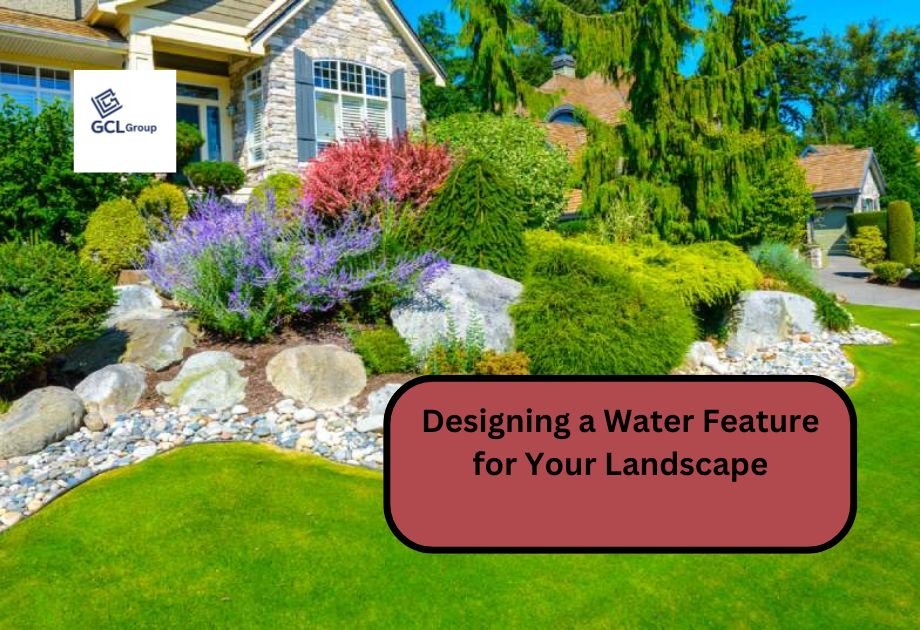Introduction
Creating a stunning landscape often involves the incorporation of various elements that enhance both beauty and tranquility. One of the most captivating features you can add to your outdoor space is a water feature. Whether it’s a serene pond, a soothing fountain, or a babbling brook, water features not only provide visual interest but also create a soothing atmosphere that attracts wildlife and promotes relaxation. In this article, we’ll explore the essential considerations for designing a water feature that complements your landscape, the various types of water features available, and tips for maintenance to ensure it remains a highlight of your outdoor space.
Understanding Your Landscape
Assessing Your Space
Before diving into the specifics of water feature design, it’s crucial to assess your landscape. Consider the following factors:
- Size of Your Yard: A small backyard may not accommodate a large pond, while a spacious property can handle more elaborate designs.
- Sunlight and Shade: Observe which areas receive sunlight and which are shaded, as this will influence the types of plants and materials you can use.
- Topography: Identify any slopes, hills, or natural drainage patterns. These elements can help determine the best placement and style of your water feature.
Defining Your Purpose
Understanding the purpose of your water feature is essential. Do you want it to be a focal point, a peaceful retreat, or a habitat for wildlife? Clarifying your goals will guide your design choices.
Types of Water Features
1. Ponds
Design Considerations: Ponds can vary in size from small garden ponds to expansive bodies of water. When designing a pond, consider its shape and depth. Curved shapes tend to look more natural, while depth will influence the types of plants and fish you can include.
Installation Tips: Choose a location that receives some sunlight but also has shaded areas to prevent algae growth. Use a pond liner to retain water, and consider adding a filtration system to maintain water quality.
2. Fountains
Design Considerations: Fountains come in various styles, from modern to classical. The sound of running water can create a relaxing atmosphere. Consider the height and type of fountain—freestanding, wall-mounted, or tiered.
Installation Tips: Ensure the fountain is easily accessible for maintenance. Choose a spot where the water flow can be easily heard but won’t create splashes that could damage surrounding plants.
3. Streams and Waterfalls
Design Considerations: If your landscape has a slope, a stream or waterfall can create a natural-looking flow of water. These features can be designed to meander through the garden, adding movement and sound.
Installation Tips: Use rocks and boulders to create natural-looking waterfalls. Ensure there’s a reservoir at the bottom to recirculate water effectively.
4. Birdbaths
Design Considerations: A birdbath is a simple yet effective water feature that attracts birds and enhances your garden’s aesthetic. Choose a design that complements your overall theme.
Installation Tips: Place the birdbath in a sunny spot but near some shelter, like shrubs or trees, to give birds a place to perch.
5. Bubbling Rocks and Containers
Design Considerations: Bubbling rocks or water containers can add a unique touch to your landscape without taking up much space. They are ideal for small gardens or patios.
Installation Tips: Ensure that the water source is properly hidden, and use plants around the feature to create a cohesive look.
Designing Your Water Feature
Creating a Plan
Once you’ve decided on the type of water feature you want, it’s time to create a design plan. Consider the following steps:
- Sketch Your Design: Draw a rough layout of your landscape, including the proposed water feature. This will help visualize how it fits into the overall design.
- Select Materials: Choose materials that complement your existing landscape. Natural stones, decorative tiles, and concrete can all work well.
- Incorporate Plants: Plan for aquatic plants in and around your water feature. These can enhance aesthetics and contribute to the ecosystem.
- Think About Lighting: Incorporating lights can enhance your water feature’s beauty at night. Consider solar lights or underwater LED lights to create a magical atmosphere.
Executing Your Plan
Once your plan is finalized, you can begin the installation process. If you’re not comfortable with DIY projects, consider hiring a professional landscaper with experience in water feature installation.
Maintenance Tips
Regular Cleaning
Keeping your water feature clean is essential for its longevity and appearance. Regularly remove debris, leaves, and algae to prevent blockages and maintain water clarity.
Seasonal Maintenance
Depending on your climate, you may need to perform seasonal maintenance:
- Spring: Clean out any winter debris and check for damage. Replant any aquatic plants that may have died off.
- Summer: Monitor water levels and consider adding treatments to control algae.
- Fall: Prepare for winter by removing any leaves that fall into the water and checking for any necessary repairs.
- Winter: In colder climates, consider winterizing your pond or fountain to prevent damage from freezing.
Wildlife Management
If your water feature attracts wildlife, ensure it is safe for them. Avoid using chemicals that can harm animals, and provide shallow areas for birds and small creatures to access the water easily.
Conclusion
Designing a water feature for your landscape can significantly enhance your outdoor space, adding both beauty and tranquility. Whether you choose a pond, fountain, stream, or a simple birdbath, the key is to ensure that it complements your existing landscape while meeting your aesthetic and functional needs. With careful planning, execution, and maintenance, your water feature can become a cherished element of your garden, providing a serene escape for you and a welcoming habitat for local wildlife. As you embark on this exciting project, remember to enjoy the process and embrace the calming presence that water can bring to your outdoor environment.
| Home | Click Here |
| Category | Click Here |

